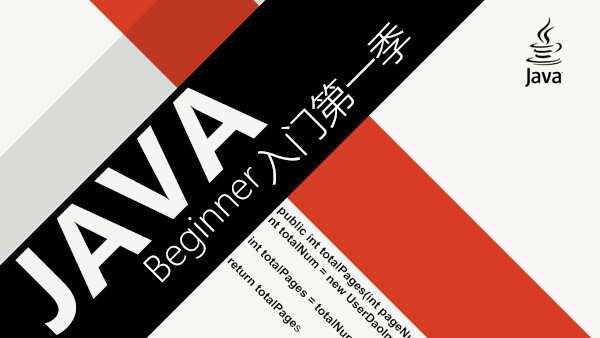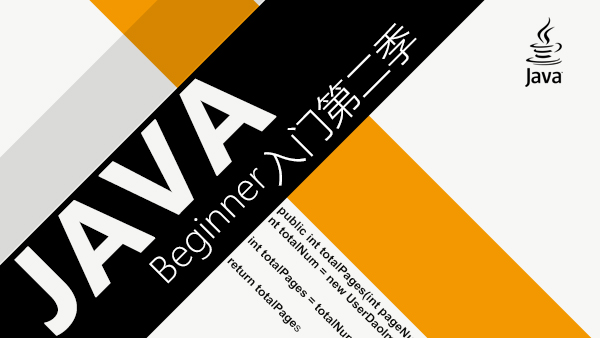本文详细介绍了Java高并发入门的相关知识,包括高并发的基础概念、Java处理高并发的优势、核心API和并发工具类的使用。通过丰富的示例代码和实战案例,帮助读者掌握Java高并发入门技巧。
Java高并发入门教程详解1. Java高并发基础概念
1.1 什么是高并发
高并发是指系统能够同时处理大量请求的能力。在互联网应用中,高并发通常出现在大型网站、在线游戏、金融服务等场景中,这些场景需要系统能够在短时间内处理大量用户请求。
1.2 高并发带来的挑战
高并发给系统带来了诸多挑战,主要包括:
- 系统稳定性:高并发可能导致系统容易崩溃或出现性能瓶颈。
- 资源限制:CPU、内存、网络带宽等资源可能成为瓶颈。
- 数据一致性:在多线程环境中,保证数据的一致性和正确性变得非常复杂。
- 性能优化:需要对系统进行细致的性能调优,确保高并发场景下的性能。
1.3 Java处理高并发的优势
Java 在处理高并发方面具有以下优势:
- 强大的并发支持:Java 提供了多种机制和工具来支持高并发,如线程、线程池、synchronized、Lock、volatile 等关键字和接口。
- 丰富的并发库:Java 提供了丰富的并发工具类,如
CountDownLatch、CyclicBarrier、Semaphore等。 - 跨平台性:Java 的跨平台特性使得高并发应用可以轻松部署到各种硬件平台上。
- 成熟的生态系统:Java 社区提供了大量的并发编程框架和工具,如 Spring、Netty 等。
2. Java并发编程核心API
2.1 线程与线程池
线程是 Java 应用程序的基本执行单元。Java 提供了 java.lang.Thread 类来创建和管理线程。线程池则是预先创建一组线程并复用它们来执行任务,以提高性能和资源利用率。
2.1.1 线程创建
使用 Thread 类或 Runnable 接口可以创建线程:
public class MyThread extends Thread {
@Override
public void run() {
// 线程执行代码
System.out.println("Thread running...");
}
}
public class Main {
public static void main(String[] args) {
MyThread thread = new MyThread();
thread.start();
}
}2.1.2 线程池
使用 java.util.concurrent.ExecutorService 和 ThreadPoolExecutor 可以创建线程池:
import java.util.concurrent.ExecutorService;
import java.util.concurrent.Executors;
public class ThreadPoolExample {
public static void main(String[] args) {
ExecutorService executor = Executors.newFixedThreadPool(5); // 创建一个固定线程池
for (int i = 0; i < 10; i++) {
executor.submit(() -> {
System.out.println(Thread.currentThread().getName() + " is running");
});
}
executor.shutdown();
}
}2.2 synchronized关键字与Lock接口
synchronized 关键字用于控制多个线程对共享资源的访问,以防止数据不一致的问题。Lock 接口提供了更灵活的锁机制。
2.2.1 synchronized关键字
synchronized 可以用于方法级别:
public class SynchronizedExample {
private int count = 0;
public synchronized void increment() {
count++;
}
public synchronized void decrement() {
count--;
}
}也可以用于代码块级别:
public class SynchronizedBlockExample {
private int count = 0;
public void increment() {
synchronized (this) {
count++;
}
}
public void decrement() {
synchronized (this) {
count--;
}
}
}2.2.2 Lock接口
Lock 接口提供了更细粒度的锁控制,可以用于更复杂的并发场景:
import java.util.concurrent.locks.Lock;
import java.util.concurrent.locks.ReentrantLock;
public class ReentrantLockExample {
private int count = 0;
private final Lock lock = new ReentrantLock();
public void increment() {
lock.lock();
try {
count++;
} finally {
lock.unlock();
}
}
public void decrement() {
lock.lock();
try {
count--;
} finally {
lock.unlock();
}
}
}2.3 volatile关键字与Atomic包
volatile 关键字用于确保变量的可见性和有序性。java.util.concurrent.atomic 包提供了一系列原子操作类,用于实现高效的并发操作。
2.3.1 volatile关键字
volatile 可以确保变量的更新对所有线程可见:
public class VolatileExample {
volatile boolean flag = false;
public void setFlag() {
flag = true;
}
public boolean getFlag() {
return flag;
}
}2.3.2 Atomic包
AtomicInteger 用于实现原子性的整数操作:
import java.util.concurrent.atomic.AtomicInteger;
public class AtomicIntegerExample {
private AtomicInteger count = new AtomicInteger(0);
public void increment() {
count.incrementAndGet();
}
public void decrement() {
count.decrementAndGet();
}
public int getCount() {
return count.get();
}
}3. 并发工具类介绍与使用
3.1 CountDownLatch与CyclicBarrier
CountDownLatch 用于等待一组操作完成。CyclicBarrier 用于使多个线程在某个点等待,直到所有线程到达该点。
3.1.1 CountDownLatch
CountDownLatch 用于等待一组任务完成:
import java.util.concurrent.CountDownLatch;
public class CountDownLatchExample {
public static void main(String[] args) throws InterruptedException {
CountDownLatch latch = new CountDownLatch(2);
new Thread(() -> {
System.out.println("Task 1 started");
try {
Thread.sleep(1000);
} catch (InterruptedException e) {
e.printStackTrace();
}
System.out.println("Task 1 finished");
latch.countDown();
}).start();
new Thread(() -> {
System.out.println("Task 2 started");
try {
Thread.sleep(1500);
} catch (InterruptedException e) {
e.printStackTrace();
}
System.out.println("Task 2 finished");
latch.countDown();
}).start();
latch.await();
System.out.println("All tasks finished");
}
}3.1.2 CyclicBarrier
CyclicBarrier 用于使多个线程在某个点等待,直到所有线程到达该点:
import java.util.concurrent.CyclicBarrier;
public class CyclicBarrierExample {
public static void main(String[] args) throws InterruptedException {
CyclicBarrier barrier = new CyclicBarrier(2);
new Thread(() -> {
System.out.println("Task 1 started");
try {
Thread.sleep(1000);
System.out.println("Task 1 finished");
barrier.await();
} catch (InterruptedException | BrokenBarrierException e) {
e.printStackTrace();
}
}).start();
new Thread(() -> {
System.out.println("Task 2 started");
try {
Thread.sleep(1500);
System.out.println("Task 2 finished");
barrier.await();
} catch (InterruptedException | BrokenBarrierException e) {
e.printStackTrace();
}
}).start();
}
}3.2 Semaphore与Exchanger
Semaphore 用于控制同时访问特定资源的线程数量。Exchanger 用于两个线程之间交换数据。
3.2.1 Semaphore
Semaphore 用于控制同时访问资源的线程数量:
import java.util.concurrent.Semaphore;
public class SemaphoreExample {
private final Semaphore semaphore = new Semaphore(3);
public void accessResource() {
try {
semaphore.acquire();
System.out.println("Accessing resource...");
Thread.sleep(1000);
System.out.println("Resource access finished");
semaphore.release();
} catch (InterruptedException e) {
e.printStackTrace();
}
}
}3.2.2 Exchanger
Exchanger 用于两个线程之间交换数据:
import java.util.concurrent.Exchanger;
public class ExchangerExample {
private final Exchanger<String> exchanger = new Exchanger<>();
public void exchangeData() {
new Thread(() -> {
try {
String data = "Data from thread 1";
System.out.println("Thread 1 exchanging data: " + data);
String received = exchanger.exchange(data);
System.out.println("Thread 1 received data: " + received);
} catch (InterruptedException e) {
e.printStackTrace();
}
}).start();
new Thread(() -> {
try {
String data = "Data from thread 2";
System.out.println("Thread 2 exchanging data: " + data);
String received = exchanger.exchange(data);
System.out.println("Thread 2 received data: " + received);
} catch (InterruptedException e) {
e.printStackTrace();
}
}).start();
}
}3.3 BlockingQueue与ConcurrentMap
BlockingQueue 是一个线程安全的队列,用于在生产者和消费者之间传递数据。ConcurrentMap 是一个线程安全的映射,支持并发访问。
3.3.1 BlockingQueue
BlockingQueue 是一个线程安全的队列:
import java.util.concurrent.BlockingQueue;
import java.util.concurrent.LinkedBlockingQueue;
public class BlockingQueueExample {
private final BlockingQueue<Integer> queue = new LinkedBlockingQueue<>();
public void produce(int value) {
try {
System.out.println("Producing value: " + value);
queue.put(value);
} catch (InterruptedException e) {
e.printStackTrace();
}
}
public void consume() {
try {
int value = queue.take();
System.out.println("Consuming value: " + value);
} catch (InterruptedException e) {
e.printStackTrace();
}
}
}3.3.2 ConcurrentMap
ConcurrentMap 是一个线程安全的映射:
import java.util.concurrent.ConcurrentHashMap;
public class ConcurrentMapExample {
private final ConcurrentHashMap<String, Integer> map = new ConcurrentHashMap<>();
public void put(String key, int value) {
map.put(key, value);
System.out.println("Put key-value: " + key + " - " + value);
}
public int get(String key) {
return map.get(key);
}
}4. 解决并发问题的实战案例
4.1 并发环境下的数据一致性问题
保证数据一致性是并发编程中的一个重要挑战。例如,多个线程同时修改同一个变量时,可能会导致数据不一致的问题。
4.1.1 解决方案
使用 synchronized 关键字或 Lock 接口可以解决数据一致性问题:
import java.util.concurrent.locks.Lock;
import java.util.concurrent.locks.ReentrantLock;
public class DataConsistencyExample {
private int count = 0;
private final Lock lock = new ReentrantLock();
public void increment() {
lock.lock();
try {
count++;
} finally {
lock.unlock();
}
}
public void decrement() {
lock.lock();
try {
count--;
} finally {
lock.unlock();
}
}
public int getCount() {
return count;
}
}4.2 死锁问题的检测与避免
死锁是多个线程互相等待资源而无法继续执行的状态。可以通过避免循环等待、保持资源占用最少、超时等待等方式来避免死锁。
4.2.1 解决方案
使用 Lock 接口的 tryLock 方法可以避免死锁:
import java.util.concurrent.locks.Lock;
import java.util.concurrent.locks.ReentrantLock;
public class DeadlockAvoidanceExample {
private final Lock lock1 = new ReentrantLock();
private final Lock lock2 = new ReentrantLock();
public void method1() {
lock1.lock();
try {
Thread.sleep(1000);
lock2.lock();
try {
System.out.println("Method 1 acquired both locks");
} finally {
lock2.unlock();
}
} finally {
lock1.unlock();
}
}
public void method2() {
lock2.lock();
try {
Thread.sleep(1000);
lock1.lock();
try {
System.out.println("Method 2 acquired both locks");
} finally {
lock1.unlock();
}
} finally {
lock2.unlock();
}
}
}4.3 并发环境下的性能优化
性能优化是提高系统并发处理能力的关键。可以通过减少线程创建、合理使用锁、减少锁冲突等方式来优化性能。
4.3.1 解决方案
使用线程池和 Lock 接口的细粒度锁控制可以提高性能:
import java.util.concurrent.ExecutorService;
import java.util.concurrent.Executors;
public class PerformanceOptimizationExample {
private final Lock lock = new ReentrantLock();
public void process() {
lock.lock();
try {
System.out.println("Processing...");
// 业务逻辑代码
} finally {
lock.unlock();
}
}
public static void main(String[] args) {
ExecutorService executor = Executors.newFixedThreadPool(10);
PerformanceOptimizationExample example = new PerformanceOptimizationExample();
for (int i = 0; i < 100; i++) {
executor.submit(example::process);
}
executor.shutdown();
}
}5. 并发编程最佳实践
5.1 代码可读性与可维护性
良好的代码结构和注释可以提高代码的可读性和可维护性。使用 Lock 接口和细粒度锁控制可以避免复杂性。
import java.util.concurrent.locks.Lock;
import java.util.concurrent.locks.ReentrantLock;
public class ReadableMaintainableCodeExample {
private final Lock lock = new ReentrantLock();
private int count = 0;
public void increment() {
lock.lock();
try {
count++;
} finally {
lock.unlock();
}
}
public int getCount() {
lock.lock();
try {
return count;
} finally {
lock.unlock();
}
}
}5.2 测试与调试并发代码
并发代码的测试和调试比较复杂,需要使用特殊的工具和方法。可以使用 JUnit、Mockito 等工具进行并发测试。
5.2.1 测试
使用 JUnit 和 CountDownLatch 进行并发测试:
import org.junit.jupiter.api.Test;
import java.util.concurrent.CountDownLatch;
import static org.junit.jupiter.api.Assertions.assertEquals;
public class ConcurrencyTest {
@Test
public void testConcurrency() throws InterruptedException {
CountDownLatch latch = new CountDownLatch(2);
MyConcurrentClass example = new MyConcurrentClass();
new Thread(() -> {
example.increment();
latch.countDown();
}).start();
new Thread(() -> {
example.increment();
latch.countDown();
}).start();
latch.await();
assertEquals(2, example.getCount());
}
}5.3 并发编程中的常见误区
常见的并发误区包括过度使用锁、不正确的锁顺序、不理解 volatile 关键字的作用等。需要深入了解并发编程的基础知识和最佳实践。
6. 总结与进阶学习路径
6.1 Java高并发编程总结
Java 提供了丰富的并发编程机制和工具,如线程、线程池、synchronized、Lock、volatile、原子类等。通过合理使用这些工具,可以有效地解决高并发带来的各种挑战。
6.2 推荐进阶学习资源
6.3 实战项目推荐
- 构建一个高并发的在线聊天系统,使用线程池和
CountDownLatch等工具来处理多个用户并发请求。 - 构建一个分布式任务调度系统,使用线程池和
Semaphore来管理并发任务执行。
通过这些资源和项目的实践,可以进一步提升在高并发场景下的开发和调试能力。

 随时随地看视频
随时随地看视频




